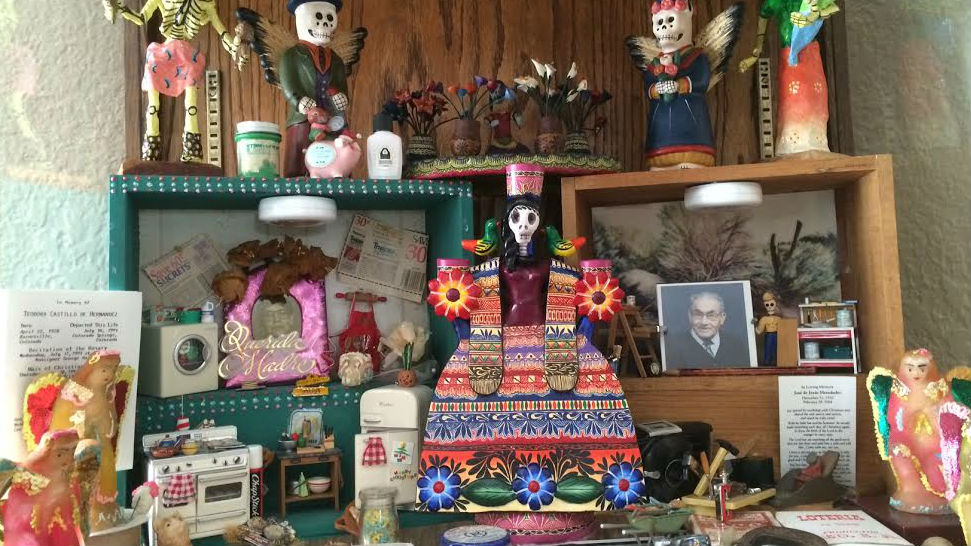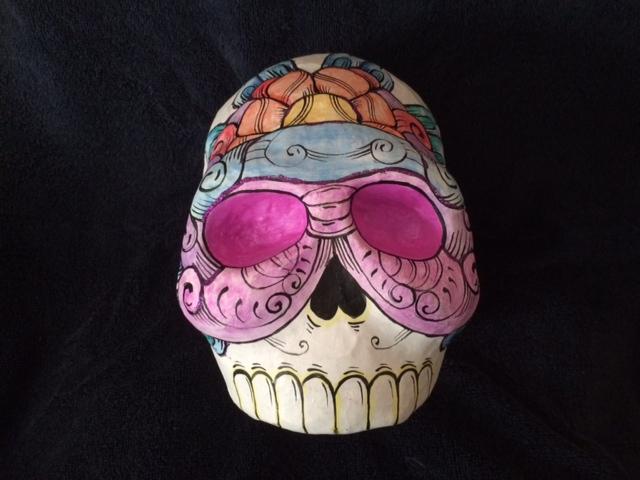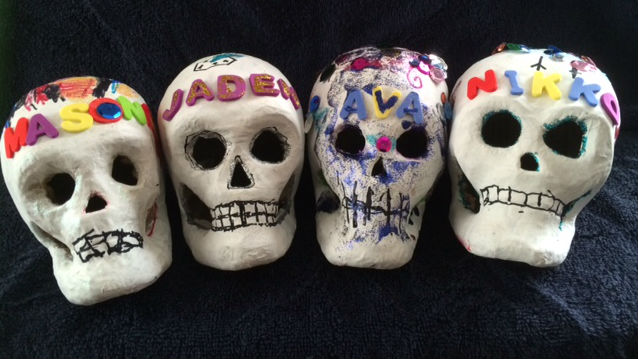
It’s hard to go anywhere in Denver at this time of year without seeing fancifully-decorated sugar skulls peering out among Halloween decorations in the windows of bars and stores.
The candy skulls (“calaveras”) are a core image of Día de los Muertos, a two-day commemoration on Nov. 1 and 2 each year of those who have passed away.
Long history in Denver
The annual Mexican holiday that sees death as part of the circle of life has been around in Denver for as long as there have been Mexicans living in Denver, which is to say, for a long, long time. Unlike the festivities in Mexico, where entire villages turned their cemeteries into fiesta venues, in the United States Día de los Muertos was always a private, family celebration.
But since the early 1980s, in line with the growth of the Mexican population in this country and the desire of Mexican Americans to celebrate their cultural roots, the holiday has moved into the mainstream -- not just in Denver but throughout the U.S.
Día de los Muertos originated in Mexico about 4,000 years ago among the indigenous populations. It bears some similarity to Memorial Day in the United States, in the tradition of people putting flowers on the graves of loved ones.

Día de los Muertos decorations are far more elaborate than those associated with Memorial Day. People festoon graves and altars with food, flowers and folk art depicting skulls and skeletons from all walks of life.
There is nothing ghoulish about the holiday. But that’s not how Día de los Muertos was perceived when it was first introduced in the Denver metro area.
In the early 1980s, Denver artist Patricio Cordova proposed a Día de los Muertos art exhibit to The Pirate Contemporary Art Oasis, a Northside collective at West 36th Avenue and Navajo Street.
The Pirates were all Anglos, but committed to thinking beyond their own cultures.
“People embraced the idea because of its edginess,” Pirates leader Phil Bender says. “The Pirates’ logo was a skull and crossbones, so there was an affinity with the sugar skulls and the folk art of Día de los Muertos.”
But the broader Denver community was not unanimously willing to embrace the Mexican holiday.
Even though movies like “Bloodbath at the House of Death” were popular in 1984, Latinos and non-Latinos alike were squeamish about Dia de los Muertos.
To them, it was macabre.
“People in the U.S. were willing to see people being killed on the big screen,” says Mercedes Hernández, program director of Denver’s KUVO jazz radio station in the mid-1980s. “But they didn’t want to think about death and its personal effect on them.”
From macabre to franchise
How things have changed.
The holiday is now so popular in “los Uniteds” that it has become a franchise.
Safeway sells marshmallow skull lollipops. Disney tried to trademark the phrase “Día de los Muertos.” World Market offers a line of Día de los Muertos decorations, plates, party favors, wine and beer. And the Denver Botanic Gardens is hosting its first Calavera Ball on Nov. 1.
But the commercialization of the Mexican holiday in mainstream U.S. culture today threatens to destroy the essential meaning of Día de los Muertos.

At this point, the Mexican holiday has become almost indistinct from Halloween, with people blending Día de los Muertos and Halloween festivities together.
For example, the animated film “Book of Life” by Guillermo del Toro, a story based on Día de los Muertos, is marketed as a Halloween adventure. And in Colorado Springs, the Cottonwood Center for the Arts is hosting a Halloween/Día de los Muertos celebration on Oct. 31.
It opens with a zombie dance and offers henna tattoos, belly dancing and the construction of mini-altars. And not everyone is happy about it.
“It’s a prime example of the disrespect and the unconscious attempt to usurp another culture's holidays,” wrote artist Jerry Vigil on his Team Muertos Facebook page .
Similarly, the meaning of Halloween also seems to have been lost in the scuffle between culture and commerce.
Halloween has its roots in an ancient Gaelic belief that on Oct. 31 the boundaries between the world of the living and that of the dead overlap and souls roam the earth.
Scottish and Irish immigrants introduced the holiday to the United States in the 1800s. Beginning in the 1900s, Halloween became a more commercial enterprise through the production of costumes, decorations and the custom of trick-or-treating.
In more recent times, the popular U.S. holiday is a billion-dollar industry of ghouls and gore. And Día de los Muertos may be headed down that same slippery, bloody slope.
One can argue about the “true meaning” of Día de los Muertos. For some it is the honoring of loved ones who have passed; for others it may mean winning first prize at a costume contest as a calavera. But for everyone, the sugar skull is here to stay.
Flo Hernández-Ramos was CEO of Denver jazz radio KUVO for 23 years and now serves as the executive director of the Latino Public Radio Consortium.








